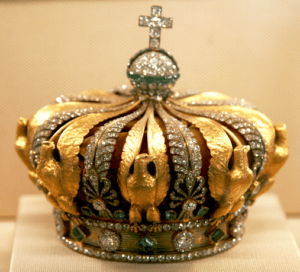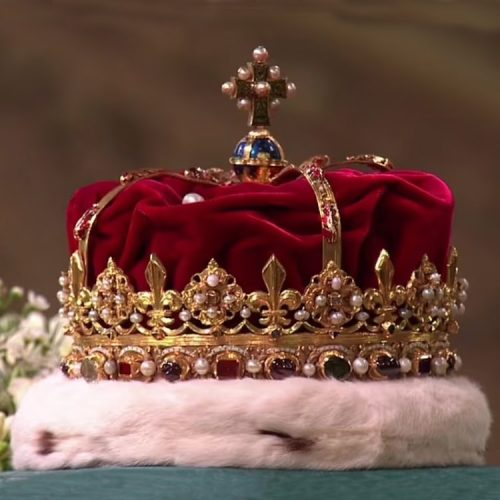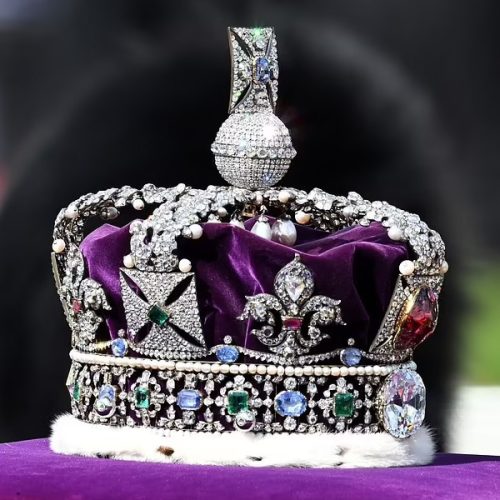
A crown is a circular head-dress, usually crafted in gold and augmented by gemstones, that is worn as a sign of sovereignty or royalty and is usually reserved for ruling monarchs. The ornamentation on a crown typically rises vertically from the circle leaving the center open or the ornamentation may intersect in the center closing over the top.
The Crown of Scotland is the oldest of Britain’s royal regalia, first worn in 1540 by King James V. Constructed from 2lbs of Scottish gold, the crown weighs a total of 3lbs 10oz, and is adorned with 42 gems and other precious stones along with 70 Scottish pearls. Queen Elizabeth II held the crown in St Giles’ Cathedral after her coronation in 1953 and it rested on her coffin, draped with the Royal Standard in Scotland alongside a white floral wreath, in the same cathedral following her death in 2022.
The Imperial State Crown is magnificently adorned with the Black Prince’s Ruby, the Stuart Sapphire, the Cullinan II diamond, and a plethora of other gemstones. Made for the coronation of King George VI in 1937, this crown is used for the coronation as well as the State Opening of Parliament and other State occasions. Shown below atop the coffin of Elizabeth II at Westminster Hall.

